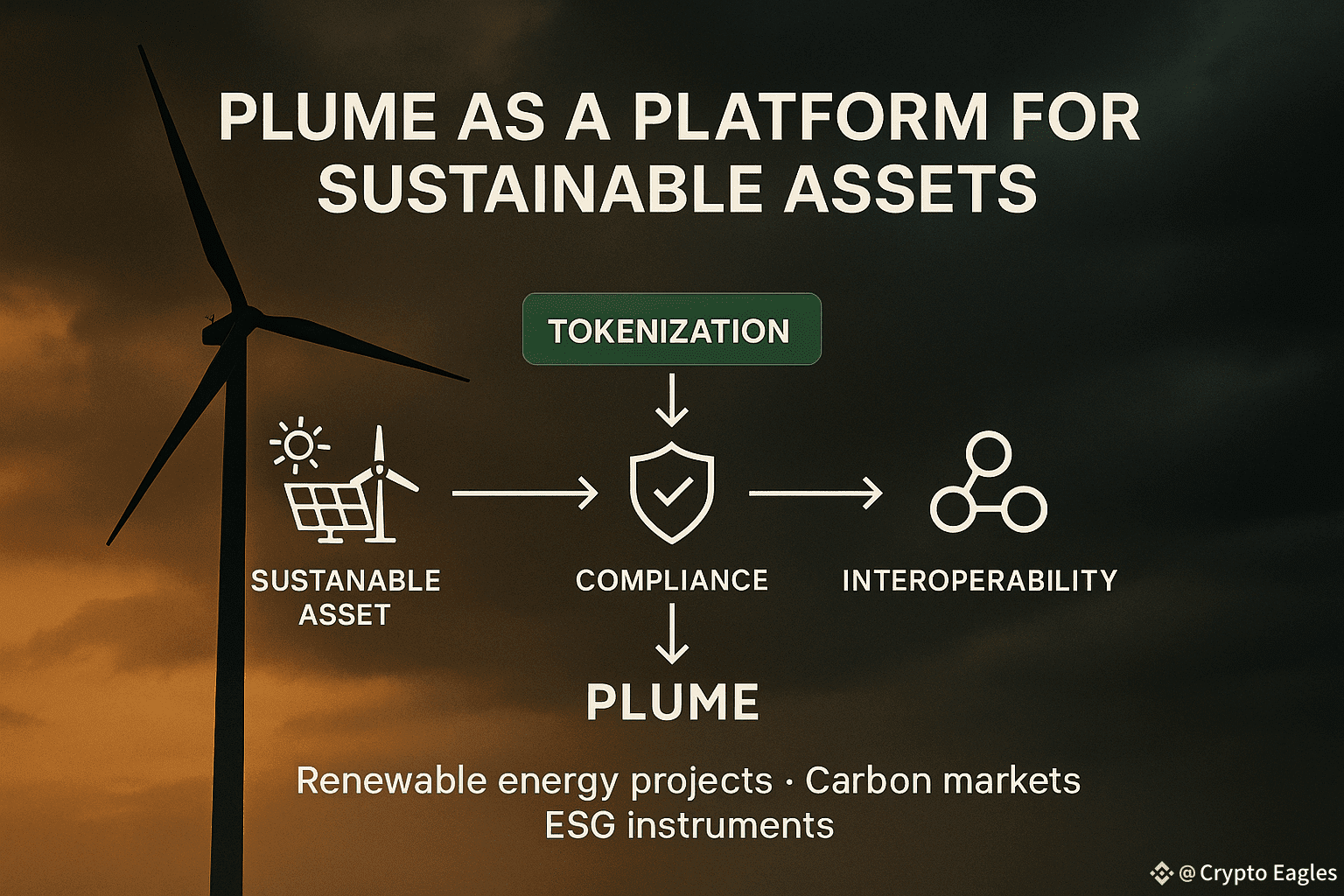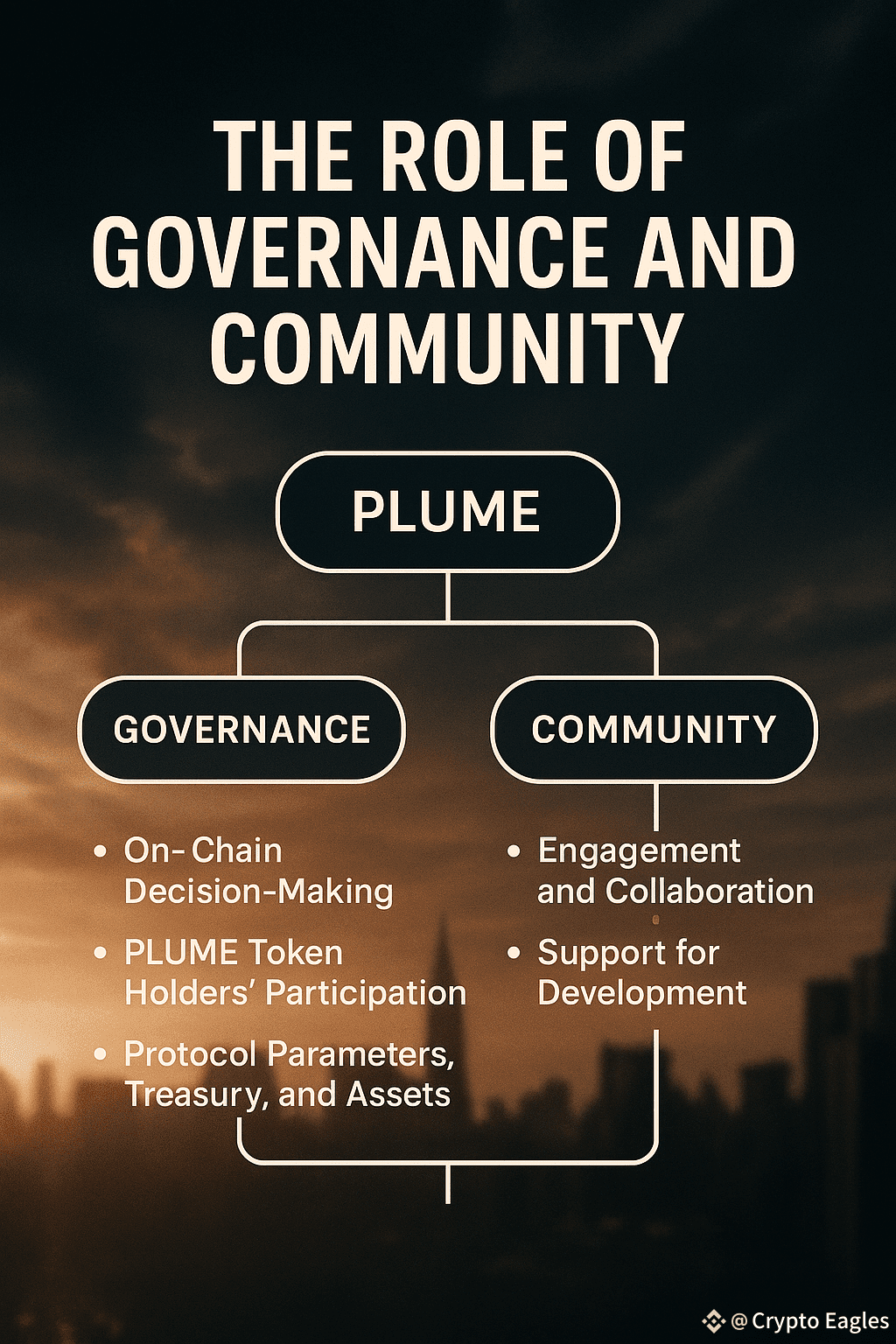Plume Network and the Rise of Sustainable Finance in Web3
The conversation around blockchain has traditionally revolved around speed, scalability, and speculation. Yet as the industry matures, the themes shaping its future are moving closer to the challenges that define the global economy. One of the most pressing of these challenges is sustainability—how societies fund, manage, and incentivize projects that impact the environment, infrastructure, and long-term growth. Plume Network has stepped into this intersection by focusing not only on tokenizing real world assets but also on creating rails for sustainable finance in Web3. This perspective positions Plume as more than just another chain chasing capital. It transforms it into a potential backbone for how the world could finance sustainable initiatives in a digital-first era.
The Emergence of Sustainable Finance
Sustainable finance is not a trend. It is a structural shift in how capital markets operate. Governments are mandating climate disclosures, corporations are being pushed toward carbon neutrality, and investors are increasingly demanding ESG-aligned opportunities. Yet despite the urgency, sustainable finance has long been slowed by inefficiencies. Projects that require funding—renewable energy plants, infrastructure upgrades, carbon reduction programs—struggle to connect with global capital at scale. Markets for carbon credits or green bonds are fragmented, opaque, and often limited to institutional players.
Blockchain offers a solution by making ownership transparent, transactions programmable, and participation global. Tokenization of green bonds, carbon credits, or infrastructure yields could make it easier to raise capital, track outcomes, and distribute returns. But for this vision to work, a blockchain must combine regulatory compliance, liquidity, and interoperability with a commitment to real assets. That is where Plume comes in.
Plume as a Platform for Sustainable Assets
Plume was designed with real world assets at its core. This makes it uniquely positioned to support sustainable finance. Its tokenization engine allows renewable energy projects, carbon markets, or ESG-focused instruments to be represented digitally in ways that are legally enforceable. Its compliance framework ensures that institutional investors can participate without fear of regulatory misalignment. Its interoperability features allow these assets to interact with broader DeFi infrastructure, creating liquidity that traditional sustainability markets lack

Imagine a wind farm raising capital not through slow bank financing but by issuing tokenized revenue streams on Plume. Investors across the world could own a fraction of the project, track its energy output on-chain, and receive proportional yield from electricity sales. Imagine carbon credits issued directly on Plume, with each token backed by verifiable off-chain activity and distributed across DeFi markets where individuals and corporations can buy, trade, or retire them. These are not futuristic hypotheticals—they are the kind of use cases Plume is actively building toward.
Transparency as a Driver of Trust
One of the biggest criticisms of sustainable finance has been greenwashing—the practice of labeling initiatives as sustainable without sufficient proof. Investors hesitate to commit capital when they cannot verify outcomes. Blockchain provides a way to address this problem through auditable records.
On Plume, sustainable assets can carry metadata that ties them to verifiable data sources. For carbon credits, this might mean including data from satellite imagery, IoT sensors, or third-party audits. For green bonds, it could mean embedding disclosures and performance reports directly into token contracts. By making transparency a feature of asset design, Plume ensures that sustainability markets gain the trust they need to scale.
Lowering Barriers for Participation
Sustainable finance has also struggled with accessibility. Large-scale projects are typically funded by governments or institutions, with retail investors excluded from participation. Tokenization changes this dynamic by enabling fractional ownership. A solar farm that once required multi-million-dollar financing rounds can now be funded by thousands of participants contributing smaller amounts.
Plume’s infrastructure allows these fractional investments to be issued compliantly, meaning retail investors can gain exposure without regulatory loopholes. By lowering minimums and widening access, Plume transforms sustainable finance from a closed-door system into a participatory market. This democratization not only spreads opportunity but also deepens the capital pool available for sustainability projects.
Liquidity for Long-Term Assets
Sustainability initiatives often suffer from a mismatch between investment timelines and investor preferences. Building renewable energy infrastructure or climate adaptation projects takes years, sometimes decades, while many investors prefer liquidity and shorter horizons. Tokenization helps bridge this gap by allowing investors to trade fractional ownership of long-term projects.
Plume’s cross-chain features make these assets liquid beyond its own ecosystem. Tokenized green bonds or revenue streams can circulate across DeFi protocols, be used as collateral, or be packaged into structured products. This liquidity reduces the friction of committing to long-term sustainability projects, making them more attractive to investors without compromising on capital availability for issuers.
Institutional Alignment
For sustainable finance to thrive, institutional participation is essential. Pension funds, asset managers, and sovereign wealth funds are under pressure to increase their ESG exposure, but they require compliant, transparent, and liquid frameworks to do so. Plume’s compliance-first design directly addresses these requirements.
By embedding regulatory safeguards into token issuance, Plume provides the clarity institutions need. By ensuring interoperability with other chains and protocols, it offers the liquidity institutions demand. By focusing on real world assets, it creates a universe of products that align with institutional mandates. This combination makes Plume a credible partner for large-scale sustainable finance initiatives.
The Role of Governance and Community
Sustainable finance is not only about capital but also about governance. Projects funded in the name of sustainability must be accountable to stakeholders. Plume integrates governance features that allow token holders to participate in oversight. Whether it is voting on how funds are allocated, tracking progress of initiatives, or approving new issuances, governance ensures that tokenized assets are not just instruments of capital but also vehicles of accountability

For communities, this creates deeper engagement. Investors are not merely passive holders of green assets—they become active participants in ensuring projects deliver their promised outcomes. This alignment of capital and accountability represents a powerful shift in how sustainable finance is structured.
The Broader Impact on Emerging Markets
Perhaps the most transformative aspect of Plume’s role in sustainable finance lies in its potential for emerging markets. Many regions in the Global South face the dual challenge of rapid development and climate vulnerability. They need infrastructure funding, renewable energy investment, and climate resilience projects, yet often lack access to global capital markets.
Tokenization on Plume could change this dynamic by allowing projects in emerging markets to connect directly with global investors. Instead of relying solely on international aid or complex financial intermediaries, local projects could issue tokenized instruments recognized by global investors. This would not only unlock capital but also create shared ownership in the outcomes of development and sustainability initiatives.
Challenges to Overcome
The vision is ambitious, and challenges remain. Regulatory frameworks for tokenized sustainability assets are still evolving. Verifying the authenticity of off-chain outcomes, such as carbon reductions, requires robust data systems and trustworthy oracles. Market education is needed to help both issuers and investors understand tokenized instruments. Liquidity may take time to mature, especially in niche markets like carbon credits.
There is also the risk of fragmentation. With multiple blockchains attempting tokenization, assets could become siloed, reducing the very liquidity they are meant to unlock. Plume must continue to differentiate itself by emphasizing compliance, interoperability, and transparency to avoid this trap.
Why Plume Has an Edge
Despite the challenges, Plume’s positioning gives it an edge. Unlike general-purpose chains, it was built with RWA tokenization as its mission. Unlike niche tokenization projects, it integrates the full stack of compliance, interoperability, and liquidity. Unlike traditional financial rails, it aligns with the ethos of openness, programmability, and global participation.
This combination makes Plume more than just a blockchain experiment. It positions it as a credible infrastructure layer for how sustainable finance can operate at scale. If it succeeds, it will not only accelerate adoption of tokenized assets but also channel billions into projects that directly impact climate, infrastructure, and social outcomes.
Looking Ahead
The next decade will see trillions of dollars mobilized for sustainability. Governments are setting ambitious climate targets, corporations are investing in ESG alignment, and investors are demanding opportunities that balance profit with purpose. The question is not whether sustainable finance will grow but how it will be structured.
Plume is building the rails for a version of sustainable finance that is transparent, inclusive, and global. It is providing the infrastructure for tokenizing assets that not only generate yield but also address existential challenges. By doing so, it is ensuring that Web3 is not just a parallel financial system but one that actively contributes to solving the most urgent problems of our time.
Conclusion
Plume Network’s role in the rise of sustainable finance highlights a new chapter in the story of blockchain. It shifts the focus from speculation to purpose, from closed systems to inclusive participation, from opaque financing to transparent, auditable impact. Its infrastructure enables tokenization of assets that matter—green bonds, carbon credits, renewable energy revenues—while making them accessible to global investors through compliance and liquidity.
The journey ahead is complex, with regulatory, technical, and educational hurdles still to clear. But the opportunity is too significant to ignore. If Plume executes on its vision, it will not only become the home of tokenized real world assets but also a central engine of sustainable finance. In doing so, it could prove that blockchain is not only capable of disrupting finance but also of transforming it into a force for global progress.
$PLUME #Plume @Plume - RWA Chain #plume





